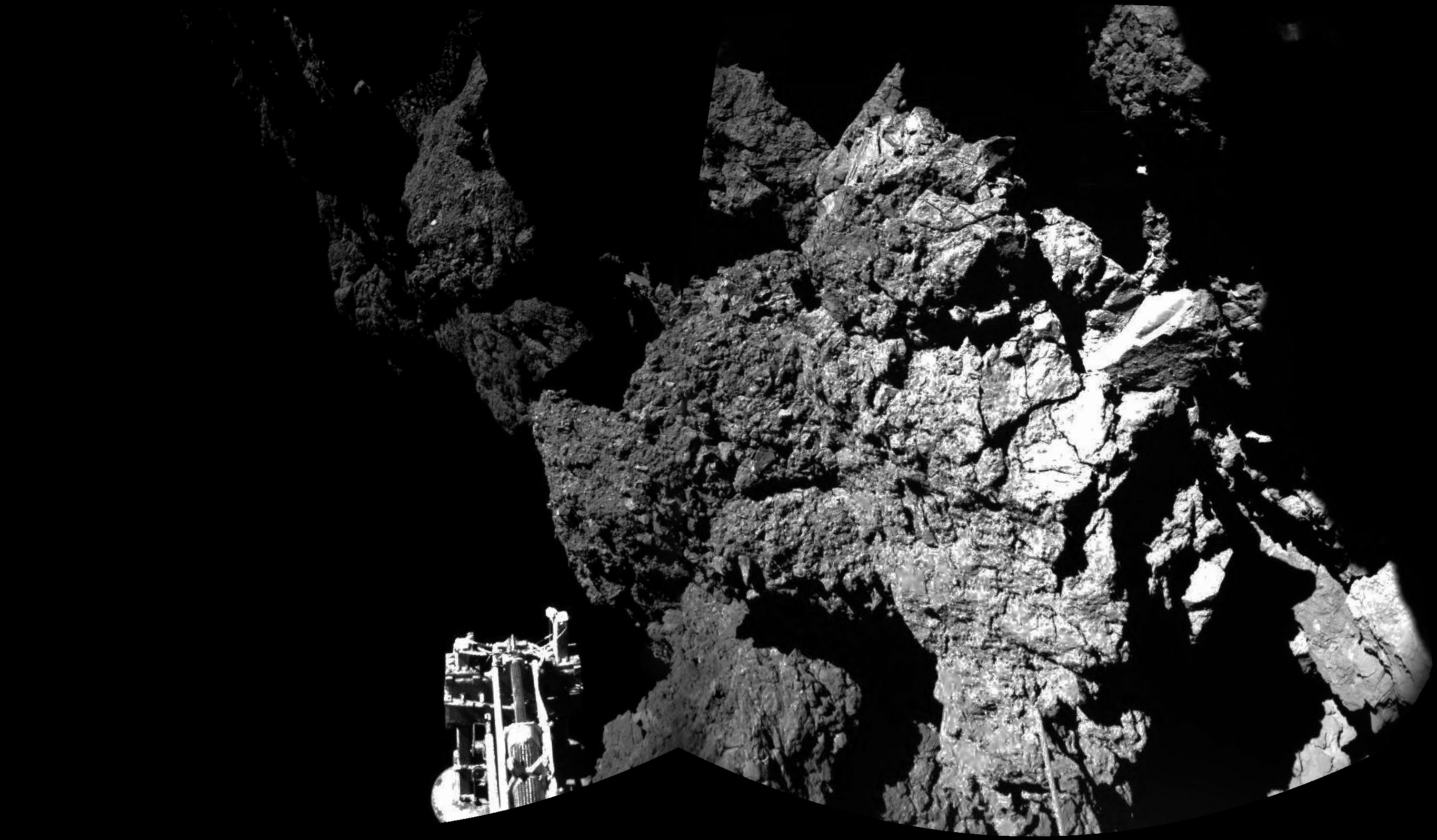Follow the bouncing Philae... The Philae lander made it down to Comet 67P's surface, but not in the way it was designed to do. The lander actually impacted the comet's surface at exactly the place and time it was supposed to, but all three devices that were intended to attach Philae to the surface failed (auger screws, harpoons, and down-thrusters). These devices are needed because gravity there is far too weak to do the job; the comet's mass is too small to create a strong gravitational field. Because these devices all failed, Philae struck the surface as planned – but then bounced back up, at about 1/3 of its initial impact speed. It traveled up, at an angle, and rotating slowly – and then nearly two hours later, after bouncing as high as a kilometer off the surface, it came back down. At that point it bounced yet again, it's rotations changed a little, and for a few more minutes it “flew”. Then it landed a third time, and stayed down.
The image above was taken on the surface, at the place where Philae finally came to rest. The scientists have only a rough idea where Philae is actually located on the comet, but it's definitely a long way from the intended site, and it's on a much rougher surface than the they aimed for. It appears that Philae is perched somehow on just two of its three legs, nearly sideways to the ground. The lighting where it rests is far from optimal, and the team is considering making attempts to flop Philae back over on its feet. They're also working hard on figuring out exactly where it is.
The fact that Philae came down in an unexpected place isn't necessarily bad news, overall. The opportunities for science may actually be greater in the more rugged territory where Philae ended up. On the other hand, the lifetime may be cut short if they can't get more solar power. It's a fascinating example of a space robot needing engineering and science assistance from earth to make a “save” from the unexpected failures and consequences of them...


No comments:
Post a Comment